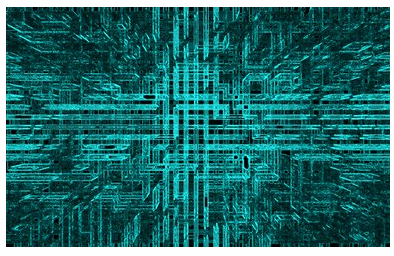Surface Mount Technology in PCB Circuit Board
What is surface mount technology? The existing technology of PCB circuit board design and manufacturing mainly consists of components located on the board and connected to conductors through holes and usually soldered in place. This through-hole method requires obvious manufacturing steps to drill holes in the plate, insert the leads into these holes correctly and consistently, and connect them firmly in place through a welding process.
Although many of these manufacturing functions are now highly automated to provide quality and efficiency, they are still a step in the manufacturing process that requires attention to detail and introduces defects and quality issues when they cannot be performed with precise precision.
Surface mount technology (SMT) began to be widely used in the 1980s with the introduction of improved manufacturing processes and surface mount devices (SMD). Almost all electronic devices that contain printed circuit boards and are mass-produced today contain a certain level of SMT manufacturing circuit boards. The size of the SMT board is usually smaller because smaller SMD components can be positioned at a higher density on the board.

SMT and through-hole PCB manufacturing
Compared with the previous through-hole technology, PCB SMT manufacturing has many advantages:
Smaller components-SMD is not only smaller, but also greatly reduces the space and process required to connect to the circuit board without the need for leads, placement and drilling, and soldering. The SMD is directly connected to the surface of the circuit board. SMD components are usually one-quarter to one-tenth the size and weight of through-hole devices-this is a clear advantage for PCB designers and the devices that will be used. Higher component density-this results in a smaller structure which facilitates the mounting of components on both sides of the circuit board. Manufacturing efficiency-Reduce costs by simplifying setup and reducing drilling operations. Reduce costs-Many SMD components are cheaper than leaded components. Reliability-SMT manufacturing is generally not susceptible to vibration or shock. SMD uses a smaller circuit board size and shorter paths to improve performance.
SMT circuit board construction certainly has trade-offs or shortcomings:
Prototype manufacturing or manual manufacturing is more difficult. Circuit board repair plints is also more challenging, rather than easily done manually. It is not feasible to use breadboard materials for construction. When there are high requirements, the SMD structure is not suitable for power supplies or large high-voltage components, such as power circuits. Thermal cycling potting compounds can damage SMD solder connections. Through-hole manufacturing is not susceptible to damage from exposure to harsh environments, repeated shocks or vibrations and other environments. Since the leads actually pass through the holes and are soldered, the connection will not fail compared to surface-mounted devices. The capital expenditure for SMT equipment is considerable. SMT design needs to be more advanced. Through holes still maintain a strong foothold in prototyping and testing. Not all components can be used as SMD. In this case, the through-hole design is still the only option. Application of SMT in practice
SMT technology is used almost exclusively in the manufacture of today's electronic equipment. SMT can generate mass production, smaller and lighter circuit boards, fewer manufacturing steps, shorter set-up time, and shortened cycle time and manufacturing complexity. This makes the production cost of the produced PCB lower, and it is more cost-effective to use in electronic products or other products.
Modern computer-aided manufacturing capabilities are increasingly automating the placement of components that previously required manual or auxiliary operations. SMD manufacturers also continue to develop components that simplify assembly by reducing size and ease of placement and connection to the board surface. Certain applications require a mix of through-hole and SMT boards to take advantage of the special advantages of each technology. These two technologies can coexist side by side without problems.
Automated processes, reduced size and weight, and simplified manufacturing have made SMT board manufacturing the main method used in today's electronic equipment. The complex equipment required to manufacture SMT PCBs can be a major investment, leading many companies that require SMT boards to use outsourced manufacturing.